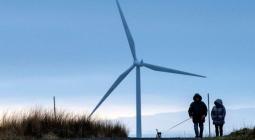Yes, the climate crisis is raising your grocery bills

Families around the world are struggling with higher grocery costs and electricity and heating bills. What they may not realize is that rising inflation is increasingly driven by another global crisis: climate change.
Last year, the United States incurred over $2bn in costs due to 20 climate-related extreme weather events, from Hurricane Ian to heatwaves and drought. Lumber, cotton, tomatoes, wheat and energy – and the products they generate, from denim jeans to your Italian takeout dinner – were all affected by these events and are now more expensive than this time last year. Climate-driven extreme weather and disasters are now more frequently responsible for production shortages, supply chain disruptions, and labor issues that lead to higher costs of living.
The cost of food is particularly susceptible to climate-related shocks like droughts, floods or wildfires. For example, the cost of eggs in the US rose by 60% in 2022. In addition to increased demand and a spike in avian flu, climate-fueled droughts and heatwaves made growing chicken feed 30% more expensive. Climate change has also harmed the growth of cotton in Texas, oranges in Florida and tomatoes in California.
Around the world, this affects lower-income people the most; they tend to spend a greater share of their income on food. In developing countries, communities will feel the effects of climate change on their wallets and livelihoods even more severely: the price of food has soared over 24% in Nigeria and 62.7% in Egypt in the last year.
Egypt is experiencing the inflationary consequences of war and climate change. As the Russian invasion of Ukraine limits wheat production from Europe’s breadbasket and drives up wheat prices, Egyptian farmers are battling extreme heat, unexpected freezes and persistent pests – hindering their fruit and vegetable harvests and further increasing food prices in Egypt.
Aside from challenges to food production, climate change is disrupting labor and transportation in the global supply chain. Heatwaves, wildfires, power and internet outages have already affected workers in warehouses, on the road and in home offices. While worker health and safety should always be top priority, the climate crisis is creating labor disruptions and shortages that can drive up prices.
According to one report by the International Labor Organization, heatwaves are projected to reduce working hours worldwide by over 2% by 2030 – equivalent to losing 80m full-time jobs and $2,400bn globally.
The good news is that we are not powerless against economic chaos driven by climate change. We can reduce climate impacts through smart adaptation and innovation – and we can stop the emissions that cause climate change in the first place. We can design market-driven policies that reduce climate-changing pollution, strengthen our economies, stabilize our climate and help consumers save money.
Just as inflation won’t be solved by clipping coupons, climate change is a problem that requires major transformations across our societies. If governments have to drive those changes during a crisis, it will be disruptive and expensive – as Europe’s recent experience of transitioning away from Russian oil and gas has vividly shown. Instead, we can use economics-based climate policy to proactively enable and incentivize large-scale action to transform our energy grids with low-cost renewables or protect rainforests, while creating benefits for families and communities.
One example playing out in real time is the US’s Inflation Reduction Act of 2022, which included $369bn in funding to tackle climate change. These investments will create well-paid clean energy and manufacturing jobs and boost US energy security – all while saving families and businesses money. In addition to credits helping families switch to electric appliances and vehicles, incentives in the Inflation Reduction Act support a grid-wide move to cheaper, cleaner sources of electricity, reducing both costs and pollution. A typical American household will save up to $220 per year over the next decade without having to change a thing.
In Brazil, the state of Mato Grosso started an ambitious program to halt deforestation of the Amazon driven by soy, corn and cattle production. The state shared funds with Indigenous peoples, local communities and smallholder farmers to co-design and commit to a broad set of smart policies that tackled the root causes of deforestation. These efforts dramatically reduced deforestation by over 90% across the entire state. Deforestation has stayed relatively low by historical standards, even during the presidency of Jair Bolsonaro. All the while, forest conservation policies drove efficient land use and led cattle and soy production to triple in Mato Grosso. Supporting these transformational efforts is smart climate policy that reduces food prices.
Large-scale solutions that align market forces with society’s goals can mobilize investment and action to reduce climate pollution, advance a just transition to clean energy and support consumers and communities. Climate change and inflation are both global problems that harm our budgets, our families and our livelihoods. With smart economics-based climate policy, we can address two global issues for the price of one. In this economy, that’s a deal we can’t afford to leave behind.
cover photo: The cost of food is particularly susceptible to climate-related shocks like droughts, floods or wildfires.’ Photograph: Yui Mok/PA





